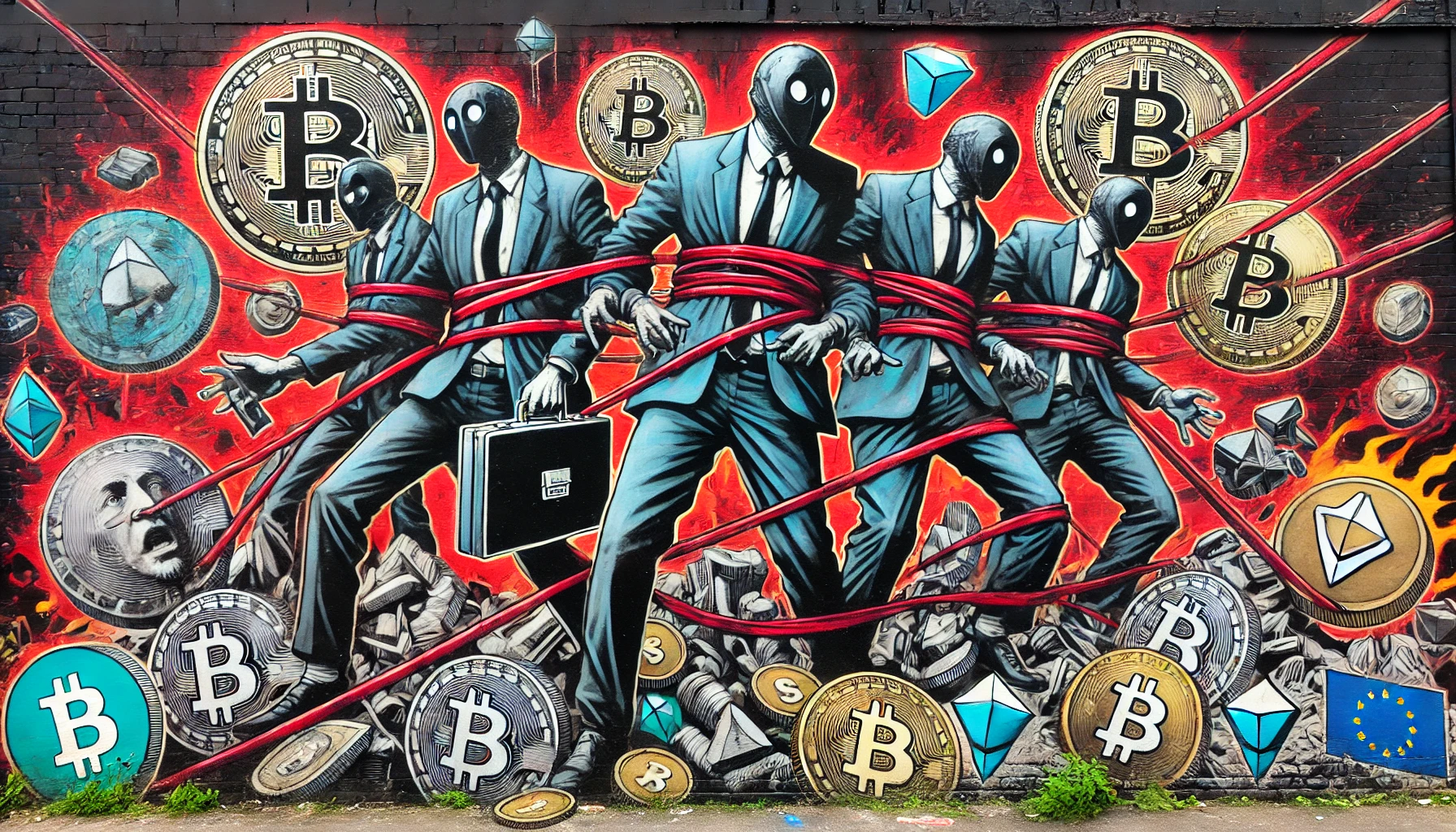The European Union’s stringent regulatory approach under the MiCA framework is stifling the development of digital assets, as seen in the delisting of Monero and Tether by Kraken and Coinbase. These measures, aimed at controlling privacy coins and stablecoins, undermine the foundational principles of cryptocurrency, which were built on decentralization, privacy, and financial freedom. By enforcing heavy regulations, such as transaction limits and strict compliance requirements, the EU is curbing the potential of decentralized P2P technology and restricting its innovative capacity. This regulatory hostility threatens to slow down the adoption of transformative technologies and limit the benefits that digital assets could bring to society, ultimately hindering progress.
Regulatory Arbitrage Never Seemed So Sweet
The European Union’s increasingly stringent regulatory stance towards digital assets, particularly under the Markets in Crypto-Assets (MiCA) framework, is having profound effects on the crypto industry, as evidenced by recent delistings of key digital assets. Notably, Kraken’s decision to delist the privacy-focused Monero coin and Coinbase’s removal of the widely-used Tether stablecoin in the European Economic Area (EEA) reflect the broader trend of regulatory crackdowns. These measures, intended to bring the crypto space under stricter control, are a significant departure from the original vision of cryptocurrency as a decentralized, open financial system accessible to all. By enforcing regulatory barriers that limit privacy and transactional freedom, the EU is not only stunting the growth of blockchain technology but also undermining the foundational principles of the crypto movement.
At its core, cryptocurrency was created to empower individuals by offering an alternative to traditional, centralized financial systems. Blockchain technology and crypto assets were designed to enable financial freedom, transparency, and privacy, free from the oversight of institutions or governments. However, MiCA’s regulatory framework imposes significant barriers to entry, constraining these ideals. By requiring strict compliance for stablecoin issuers and banning privacy coins like Monero, the EU is effectively neutralizing crypto’s potential to operate as a decentralized system. These new regulations prioritize surveillance, allowing authorities to freeze or censor transactions, which defeats the purpose of digital assets that were originally envisioned to circumvent such control.
The delisting of Monero and Tether in the EU illustrates how MiCA’s framework is pushing crypto exchanges to fall in line with traditional regulatory approaches. Privacy coins like Monero, which offer enhanced anonymity for users, are seen as a threat by regulators due to their resistance to surveillance and government oversight. Similarly, stablecoins like Tether face strict operational limits, with caps on transaction volumes and requirements for e-money licenses. These restrictions not only limit the availability of key digital assets in the EU but also serve as a broader signal that the EU is actively working to curb the development and usage of blockchain technology that prioritizes privacy and financial autonomy.
By imposing draconian regulations, the EU is effectively shooting itself in the foot, stunting the development of a powerful, novel technology that could significantly benefit society. Cryptocurrencies have the potential to revolutionize financial systems by offering faster, more secure, and more accessible forms of payment. Blockchain technology itself holds promise in areas as diverse as supply chain management, voting systems, and decentralized finance. Yet, by pushing for total surveillance and seeking to integrate crypto into the legacy financial system, the EU risks alienating innovators and driving the most cutting-edge developments out of Europe. Rather than fostering innovation, these regulations are likely to hinder technological progress, slowing the adoption of transformative technologies.
The EU’s hostile regulatory environment towards digital assets under the MiCA framework represents a fundamental misstep in handling emerging technologies. By attempting to bend crypto to fit within the confines of the traditional financial system, the EU is not only contradicting the decentralized philosophy of digital assets but also stifling innovation that could advance society. The ability to freeze or censor transactions, impose caps, and delist privacy-preserving technologies contradicts the core values of cryptocurrency and represents a regression to outdated financial models. If the EU continues down this path, it risks falling behind in the global race to harness the full potential of blockchain technology and digital assets, missing out on opportunities to benefit from these groundbreaking innovations.
The European Union’s efforts to defang digital assets and curb their freedom-promoting qualities are fundamentally at odds with the ideals of a free and open society. By imposing restrictive regulations, the EU is undermining the decentralized nature of cryptocurrency, which is designed to empower individuals and bypass centralized control. As a result, crypto projects are increasingly likely to pursue regulatory arbitrage, moving to jurisdictions that are more welcoming to innovation. In the long run, this will harm the EU, as it will lose out on the economic and technological benefits of blockchain advancements. Meanwhile, the technology will continue to evolve, and as we are already seeing, it will reach a point where it outpaces regulatory efforts, rendering attempts to control or censor it ineffective. In trying to rein in digital assets, the EU risks alienating innovators and becoming irrelevant in the global crypto landscape.















